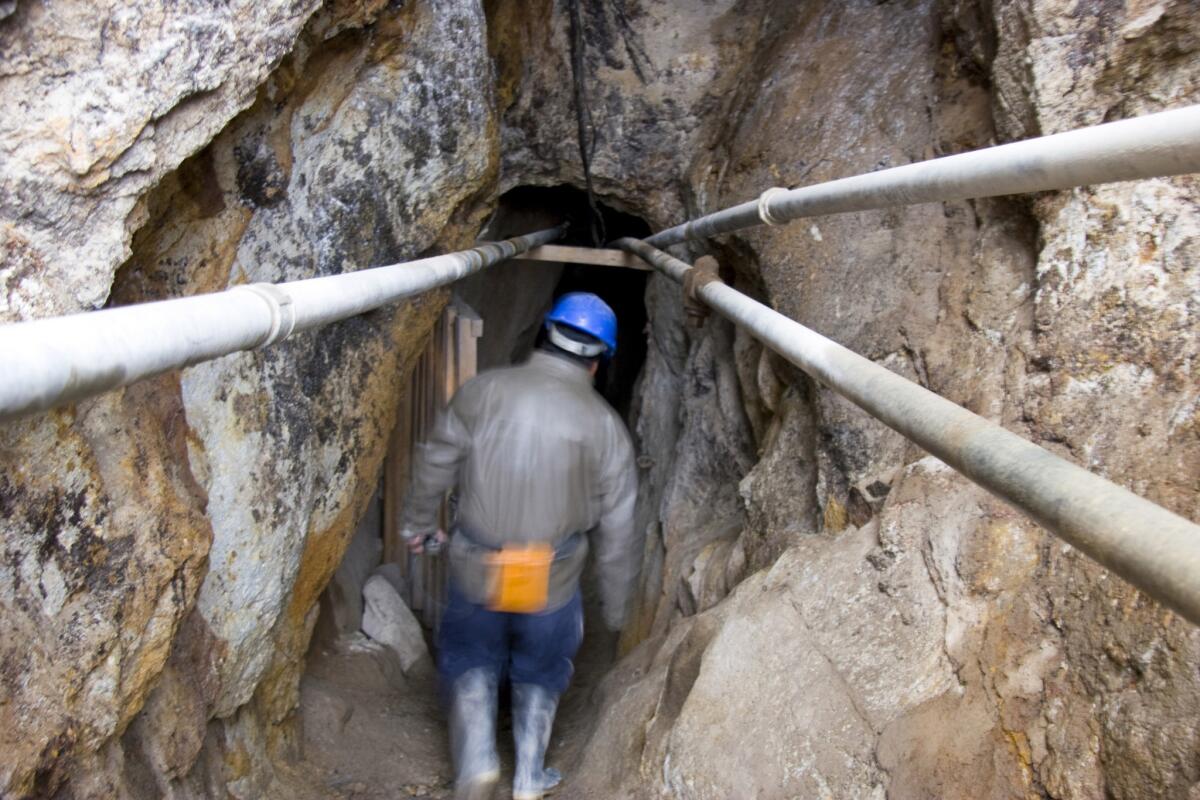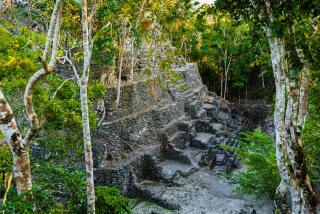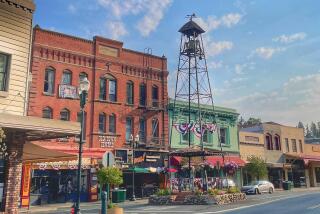Mining the history of a Bolivian silver town well worth the trip

A miner enters the silver-laden Cerro Rico in Potosi.
POTOSI, Bolivia — For more than 300 years the Spanish empire was fueled with silver mined in Potosí’s Cerro Rico, or “rich hill,” home to one of the largest veins of silver ore in the New World.
The mountain, supposedly discovered by a llama herder in 1545, was estimated to be 80% silver. The Andean town, perched at nearly 14,000 feet, at one time had 160,000 residents and was once one of the richest and largest cities in the Americas.
You can tour the mines, which still produce silver (and zinc), and visit the Casa Nacional de la Moneda, where silver was refined, molded into bricks and eventually pounded into coins that were transported by llamas to the sea and then on ships bound for Spain.
The museum was once a mint and has on display models of the ships that carried the silver and the original mule-driven wooden cog machines that had been sent from Europe to mold the silver into bricks. There are also life-size dioramas depicting the horrifying and toxic conditions indigenous and African slaves worked under to refine and smelt the silver.
The Cerro Rico, red and perfectly shaped, towers over the old colonial town, the center of which is so well preserved that it is disorienting to see cars on the narrow, cobble-stoned streets lined with grand churches and ornate colonial architecture.
On our second day we rose early to take a three-hour tour into the Cerro Rico with former miners, who led us into the cold, damp tunnels that riddle the ancient cone. Mining carts on rails shot by every couple of minutes, and we would have to step out of the way. As we went deeper the tunnels became lower, narrower and hotter.
My 12-year-old son, Theo, became nauseated after three quarters of a mile and asked to be taken out with me. My 10-year-old, Benji, continued on with my husband, eventually traveling down two more levels in the mountain, in shafts so low and narrow they had to crawl 30 to 40 feet on all fours at various points.
My eldest son was fascinated by the mint and deeply affected by seeing boys not much older than himself working in the mines. My youngest pronounced the tour of the mines “the best day of my life.”
Mine tours can be dangerous so research carefully, using your guidebook and recommendations of other visitors and your hotel. We chose ours (Big Deal Tours, www.bigdealtours.blogspot.com, about $22 per person) because the former miners know what they are doing.
We almost skipped Potosí because it is so hard to reach: The main way in and out is by paved road. The four-hour bus ride from Uyuni was hair-raising. We left at dusk, traveling on an unpaved road, climbed higher on winding Andean mountain roads (now paved) in darkness, then hurtled down the final descent into Potosi with all the lights off inside the bus.
But skipping it would have been a mistake. The history of the silver, the stories of horrific treatment of the slaves who worked in the mines for the Spanish and the difficult lives of the miners today will stay with you long after you return home.
MORE:
Bolivia’s raw beauty calls to travelers looking for adventure
Bolivia’s ethereal Salar de Uyuni salt flats will shake your worldview
La Paz’s cable-car system Teleferico a heady ride that bridges Bolivia’s values
More to Read
Sign up for The Wild
We’ll help you find the best places to hike, bike and run, as well as the perfect silent spots for meditation and yoga.
You may occasionally receive promotional content from the Los Angeles Times.






